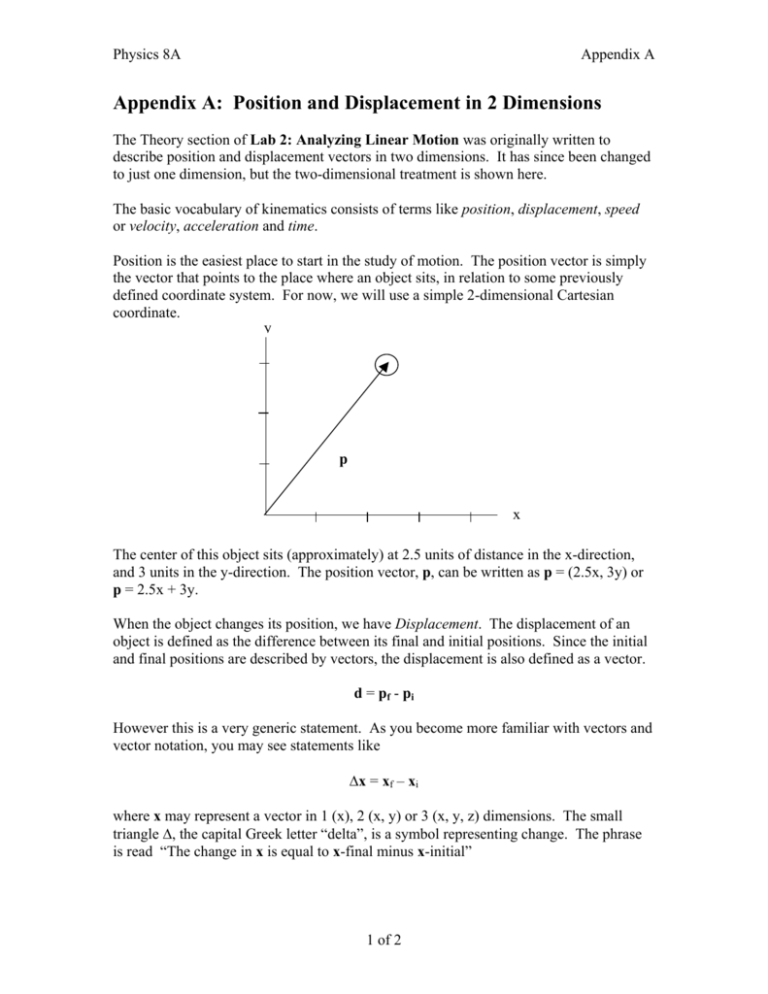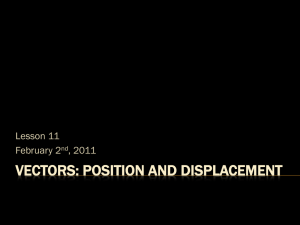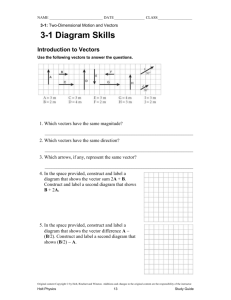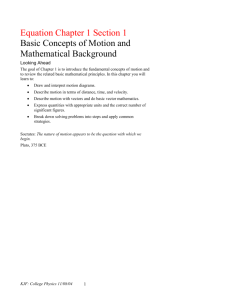Theory for Lab 2: Analyzing Linear Motion
advertisement

Physics 8A Appendix A Appendix A: Position and Displacement in 2 Dimensions The Theory section of Lab 2: Analyzing Linear Motion was originally written to describe position and displacement vectors in two dimensions. It has since been changed to just one dimension, but the two-dimensional treatment is shown here. The basic vocabulary of kinematics consists of terms like position, displacement, speed or velocity, acceleration and time. Position is the easiest place to start in the study of motion. The position vector is simply the vector that points to the place where an object sits, in relation to some previously defined coordinate system. For now, we will use a simple 2-dimensional Cartesian coordinate. y p x The center of this object sits (approximately) at 2.5 units of distance in the x-direction, and 3 units in the y-direction. The position vector, p, can be written as p = (2.5x, 3y) or p = 2.5x + 3y. When the object changes its position, we have Displacement. The displacement of an object is defined as the difference between its final and initial positions. Since the initial and final positions are described by vectors, the displacement is also defined as a vector. d = pf - pi However this is a very generic statement. As you become more familiar with vectors and vector notation, you may see statements like ∆x = xf – xi where x may represent a vector in 1 (x), 2 (x, y) or 3 (x, y, z) dimensions. The small triangle ∆, the capital Greek letter “delta”, is a symbol representing change. The phrase is read “The change in x is equal to x-final minus x-initial” 1 of 2 Physics 8A Appendix A y y ∆x d pi xi or pf xf x x To find the value of the displacement vector, we use vector subtraction: d = pf – pi d = (4x, 3y) – (2.5x, 3y) d = (4x + 3y) – (2.5x + 3y) d =(4x – 2.5x) + (3y – 3y) d =1.5x In terms of a vector x we would write: ∆x = xf – xi ∆x = (4x, 3y) – (2.5x, 3y) ∆x = (4x + 3y) – (2.5x – 3y) ∆x = (4x – 2.5x) + (3y –3y) ∆x = 1.5x As you become more familiar with adding and subtracting vectors, you will likely skip some of these steps. 2 of 2











